
You want your Instagram content to convert.
No wonder: With more than 200 million Instagram users visiting at least one business profile daily, and with 73% of them saying that Instagram is the best way for brands to reach them, you can't miss such a vast audience. Right?
The problem is that 80% of your competitors think the same.
In 2020, when content authenticity and interactivity are among the top Instagram trends, engagement becomes the core metric. And when the marketing competition is so crazy today, it becomes not that crazy to consider alternative tactics to engage users.
In short, it's time to pay attention to Instagram captions. Text messages, along with exceptional visual content, are what can help to distinguish yourself from the crowd, hooking users and appealing to their emotions. And that's where alternative copywriting tricks take the stage.
Here are five writing tactics to try out for your improved engagement on Instagram.
1) Hook with the very first sentence
As you know, Instagram shortens captions after three lines, so you need to focus on the very first sentence:
Lead with the hook that will be intriguing enough for users to realize they want to keep on reading. Words you use in captions shape your brand's story and personality, so stick to your brand voice and tone.
The most common trick to hook readers is a question. Asking something that triggers a user's need or pain point, you engage them to click "More" in search of the answer.
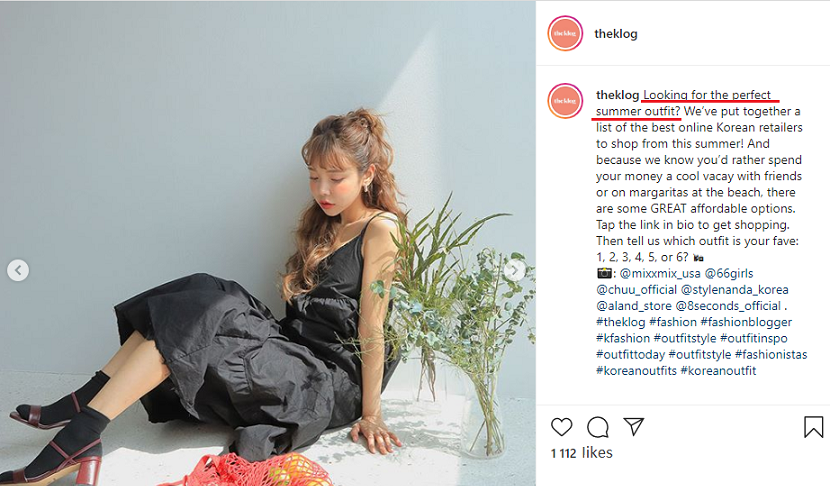
And yet, there are some alternative writing hooks you can try besides a question:
- Share a quote. A relevant quote from a celeb your audience loves may influence the engagement rate by far.
- Surprise with a misconception. Start with a statement about a universal truth being false. That will intrigue followers to keep on reading.
- Write a joke. A little humor helps to grab attention and spark interest in the topic.
- Start telling a story. A compelling first sentence makes users click to find out what happened next and what was the end.
- Use statistical data. Surprise with a new fact your followers might not have been known, to arouse curiosity.
Also read: 10 Tips for More Interaction on Instagram

Sure enough, bare facts and boring statistics don't work on Instagram. So it would be best if you hooked followers with words as well. For that, consider sensory words.
These are lexical items that can help readers verbally see, hear, taste, smell, or feel your message. Depending on your brand message, you can choose sensory words that would influence your target audience most. Henneke Duistermaat described these words best and divided them into five categories:
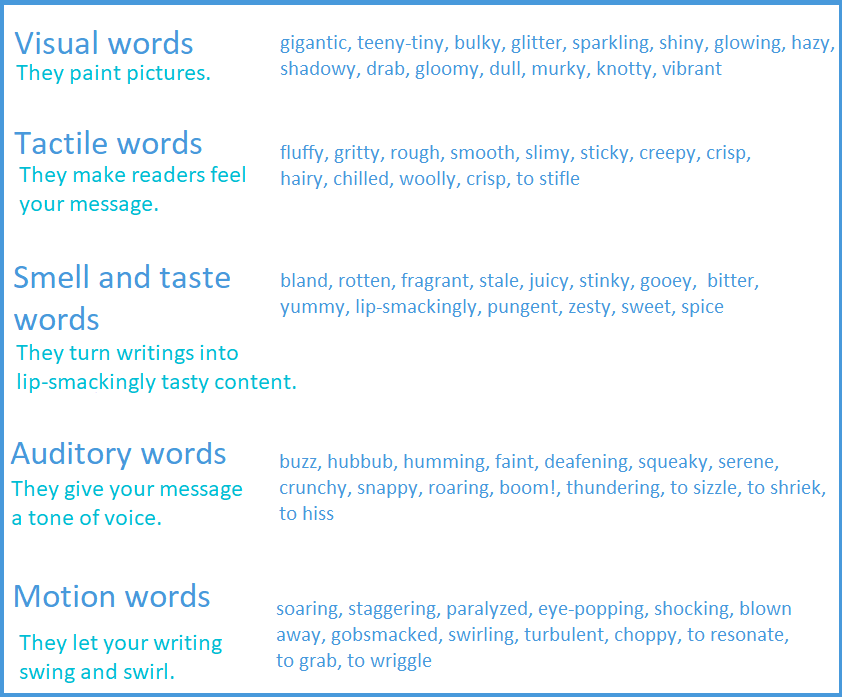
It's a persuasive trick not only to grip the user's attention but also give impulse to lead generation.
2) Add value
You know the pillar of effective Instagram content: engaging and original, it also needs to answer the "What's in it for me?" question.
So, think like a consumer. What value would they get from your writing? What problem or pain point does your product cover and solve? To write an engaging Instagram caption, make sure to highlight and answer these questions.
The problem is that users don't trust brands and their ads anymore. For them to listen to your message, focus on emotions you want it to trigger. Your call to action matters, but you need to build a bridge to it in your caption.
Consider a PPB method of Instagram writing. First described by Brian Dean as a copywriting trick to use in blog posts introductions, it fits social media writing too because it motivates followers to click.
- P — preview: tell users what they'll get from you.
- P — promise: tell how it will solve their problem.
- B — bridge: use a transitional phrase to build a logical bridge to your CTA.
Try something like that when writing your Instagram content:

Another trick to consider for better engagement on Instagram: offer tips and tricks to your readers; share educating content with them; provide them with step-by-step instructions. The added value within Instagram captions makes them more likely to be shared or even bookmarked.
Like this:

Or this:

3) Use storytelling
The power of storytelling and the overall narrative has long been known: A human brain retains 70% of information through stories and 95% – through emotions, so the only way to make people want to listen to you is to tell them a story.
And that's probably the #1 reason why Instagram Stories is the hottest feature of this social network.
When told right, a story is the best way to make followers see the world through your eyes. For business, storytelling is a chance to build a brand identity and make a personal connection with customers. Stories hook attention, help to remember you, and can motivate users to follow and buy from you with time.
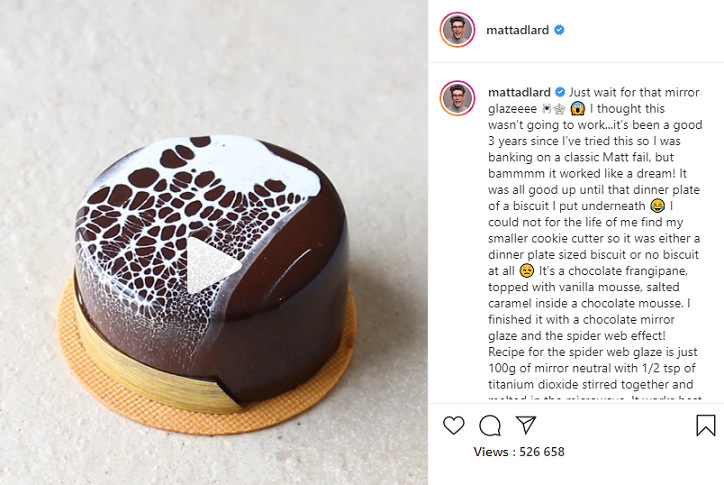
How to write stories in Instagram captions?
Make sure to include these four components: your story needs a hero, a structure, cohesiveness, and proximity to the real world.
- A hero: it may be you, your product, or your customer who solves his problems thanks to your brand.
- A structure: it's a plot with three main elements of a narrative, such as a set-up, narrative arc, and conflict resolution.
Your narrative arc should be cohesive and relate to the real world. Use the combination of process description, your experience, and feelings for readers to recognize themselves in your story and want to share it.
Remember about tags and hashtags. They make your content more visible and help you reach a broader audience. One to three hashtags are most used in Instagram posts, but you are welcome to add more but "hide" them below your story.
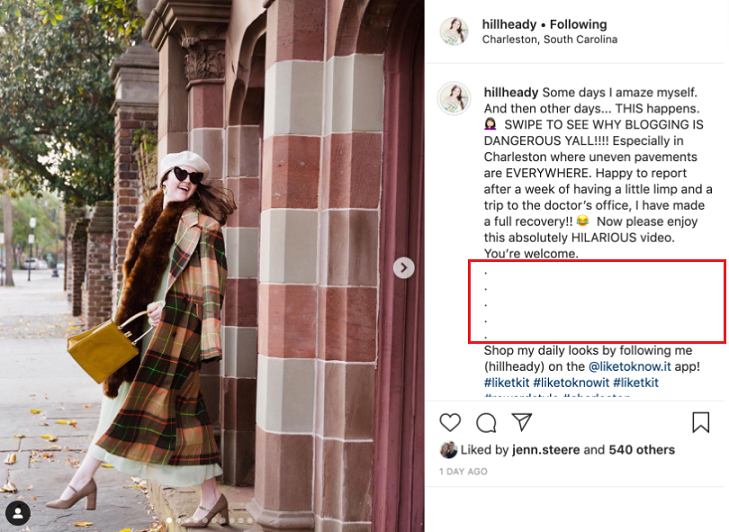
It makes your story look more authentic, and it doesn't deflect attention from the content itself. More than that, hidden hashtags and spaces in Instagram captions make your content look more appealing and easy to read.
4) Remember about language tricks
When thinking of a working plan and content strategy for Instagram, make sure to incorporate the sense of authenticity into it. The top Instagram trend in 2020, it plays a significant role in engaging the audience.
Particular gimmicks with language can help you sound more authentic.
First and foremost, remember that only 29% of Instagram users are over 35. The majority are Millennials and Gen Z representatives who communicate and perceive information faster and simpler. A content shock and short attention span make them ignore long, annoying texts with tons of professional slang and marketing buzzwords.
So, it would help if you focused on writing conversational captions. Write like a human, not a robot: use active voice, short sentences, emojis (where appropriate), and spaces for better readability. Sure enough, you want to be strategic and intentional; but also be natural for users to feel like you are their friend.

How to be authentic on Instagram:
- Share real, behind-the-scenes content.
- Incorporate memes and tweets (another content trend on Instagram in 2020, by the way) for a relatable feel.
- Use diverse models in photos; make everything look natural in pics.
- Consider interactive content whenever you can.
- Write the way you speak; stick to words everybody knows.
- Consider your brand voice and tone: you want to sound young but not childish; confident but not cocky; funny but not clownish.
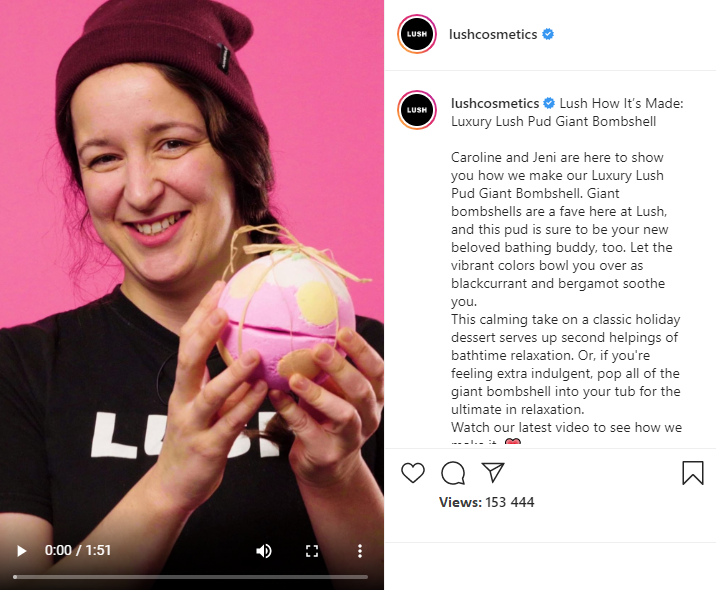
Alternative tactics to try here: phonosemantics, aka using particular phonemes in words to trigger desirable emotions and associations from readers.
Example:

This caption repeats /g/ and /l/, which is about shining and brightness, and plays with other words to make readers smile.
Another one:

This caption is about /b/ to tell about something big and loud to emphasize confidence and create a sense of urgency.
5) Use emotional narrative
To succeed with Instagram marketing today, you need to focus on users' needs rather than your product. They come online for conflicts and emotions, and they want to read stories that would align with their core values. With that in mind, you need to create content that would appeal to those values but reflect your brand's nature at the same time.
For that, use emotional narrative in Instagram content.
It's a writing technique of building your message by particular words, writing structures, and visual hooks to keep users emotionally invested and willing to respond.
That's how to use it:
1) Appeal to basic instincts. (They are subconscious needs appearing in our limbic system and are responsible for our behavior, emotions, and motivation.) Turning to these instincts in Instagram copywriting, you'll hook readers to respond.

Basic instincts are three: social, self-preservation, and sexual.
- Self-preservation is about physical health, safety, and a secure environment. (It makes food and lifestyle blogs so popular.)
- Social is about creativity and action, personal value, status, and approval.
- Sexual is about connections, adrenaline, people, attraction.

Use "tasty" words, create the illusion of presence (post quizzes, carousels, tests, and other interactive content), and help users find answers (post strategies, tips, secrets, tools, etc.).
Also, appeal to the "you can do it" mantra in your content. Most users are looking for easy ways to do something, so show them they can do it. Use words such as "easy," "quick," "simple," "DIY," etc.
2) Use neuro copywriting tactics in your posts. (It's about the psychological effect of particular words and sounds to the human brain.) When written in a definite order and the right place, they serve like mental hooks for the audience.
What tactics to use here:
- Use active verbs and no weak adverbs.
- Use odd numbers and beneficial adjectives.
- Remember about sensory words and phonosemantics (already mentioned above).
- Use transitional words for better readability.
- Consider stylistic devices such as repetition, metaphor, and contrast.
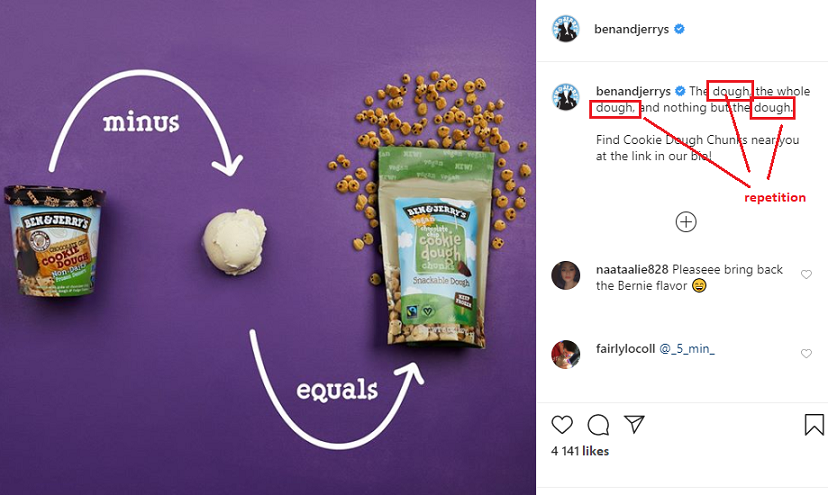
Also, remember about emojis.
They add extra fun and flavor to Instagram captions. When placed at the end of paragraphs, emojis serve as "bookends," breaking up your long stories. At the very least, emojis can direct users to take action, like clicking the link or jumping to comments.
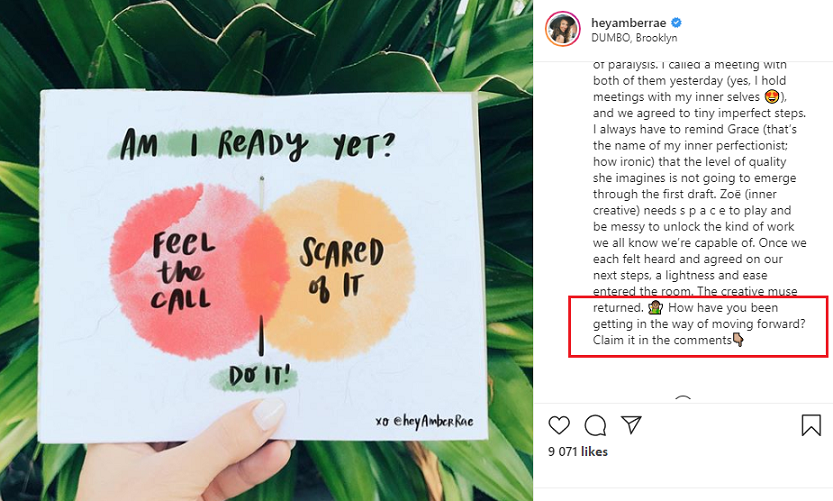
Make sure emojis are natural to your brand voice and tone and determine a set of emojis to use for keeping things consistent. And don't go too far: a mixed bag of emojis in one caption do harm, not good.
Conclusion
On Instagram, users want to see your authenticity and know what happens in your world right now that could relate to them. So, if you want to engage them — give it to them.
- Hook with the very first sentence: use a question, a quote, a misconception, a joke, or an interesting fact that might surprise the audience.
- Add value to your every Instagram caption: answer the "What's in it for me?" question.
- Tell stories: it's your chance to build a brand identity and make a personal connection with customers.
- Use language tricks: active voice, sensory words, short sentences, emojis, and phonosemantics.
- Consider emotional narrative: appeal to instincts, use neuro copywriting tricks whenever appropriate, share interactive content, use carousels, and more.
Now, get writing! And remember:
To make sense of your Instagram marketing, you need to know what's working and what isn't to increase your engagement rates. So, always measure your Instagram efforts: track the data to see how users interact with your Instagram content and optimize the strategy based on your Instagram analytics.
Related articles
10 Social Media Tactics every marketer should employ in 2020
How to collect customer feedback with Instagram Stories
6 Hacks that will take your Instagram Stories to the next level
How to keep your social media channels engaging for your followers

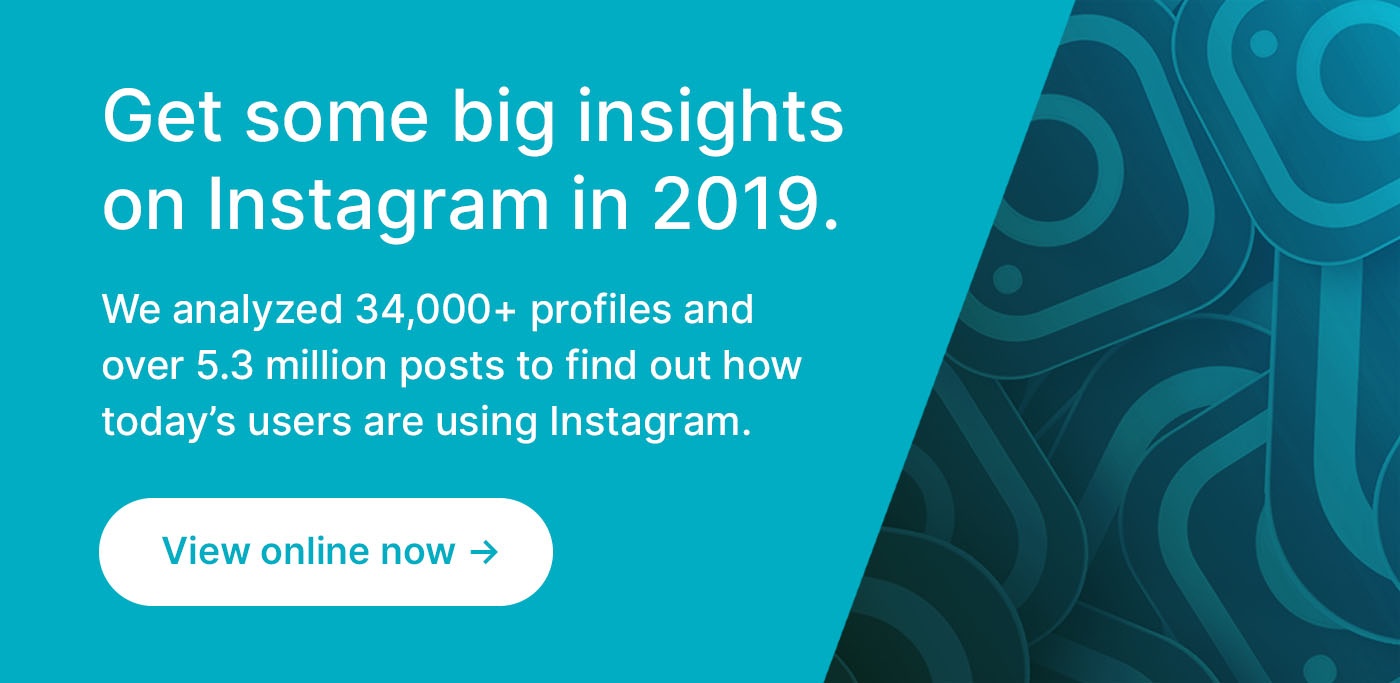

Join the conversation. Leave us a comment below!